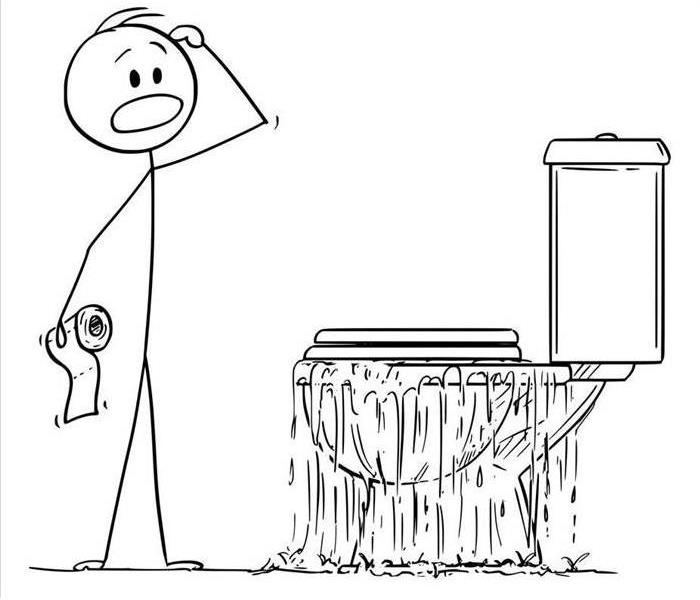Handling a Toilet Overflow
4/8/2022 (Permalink)
Toilet overflow does not happen every day but it is a common enough occurrence. Most often the cause is a clog that needs to be snaked out or forced through with a plunger.
In more rare instances, the overflow is the result of a backup and sewer damage, which will require the help of a water mitigation company in South Boston, VA. However, it is necessary to focus on the more common issue before worrying about backups. There are a few steps to dealing with the aftermath of an overflow.
3 Steps To Handle a Toilet Overflow
- Stop the Flow of Water
Before calling a sewage company, especially if the water has not flooded the bathroom yet, see if you can stop the flow of water. Remove the lid from the tank and press down on the flapper valve at the bottom of the tank — do not worry, the water is clean. With the valve pressed down, lift the float to stop the water (This is only useful if the water started to overflow immediately after a flush). If the water still does not stop, turn off the valve at the back of the tank.
- Deal With the Clog or Problem
If the water level stops rising in the toilet, it is safe to say you have a clog in the waste line, meaning you likely do not have significant sewer damage. You can use a plunger or a drain snake or auger to attempt to remove the clog. If neither tool is helping, you might need something with more power or greater reach, meaning you will need the help of a professional.
- Call a Professional for Help
If the flooded toilet is the result of a clog, professionals will have augers with significantly longer reaches than a typical house snake. However, depending on the depth of the problem and if the water stopped rising, you might have more problems than a simple clog.
While sewer damage is not the most common issue for a toilet overflow, it can happen. Always remember that a professional water mitigation service has the tools and skills necessary to help.




 24/7 Emergency Service
24/7 Emergency Service
